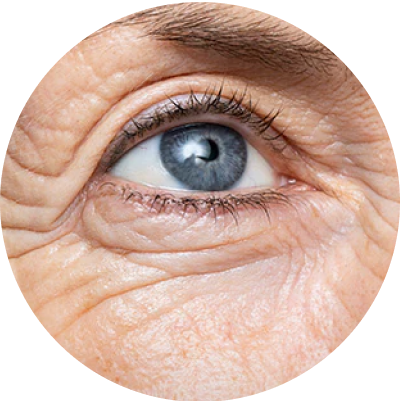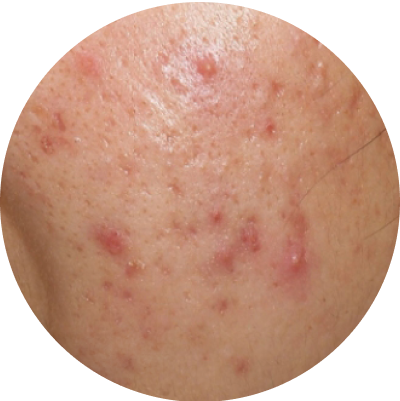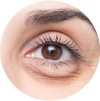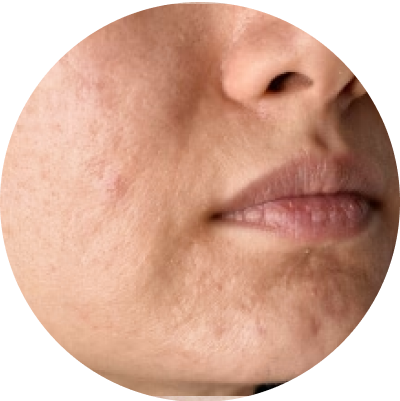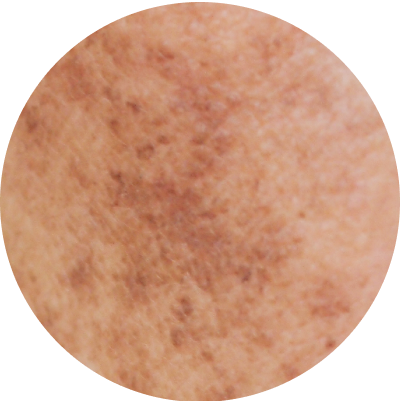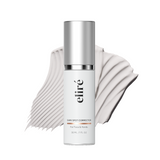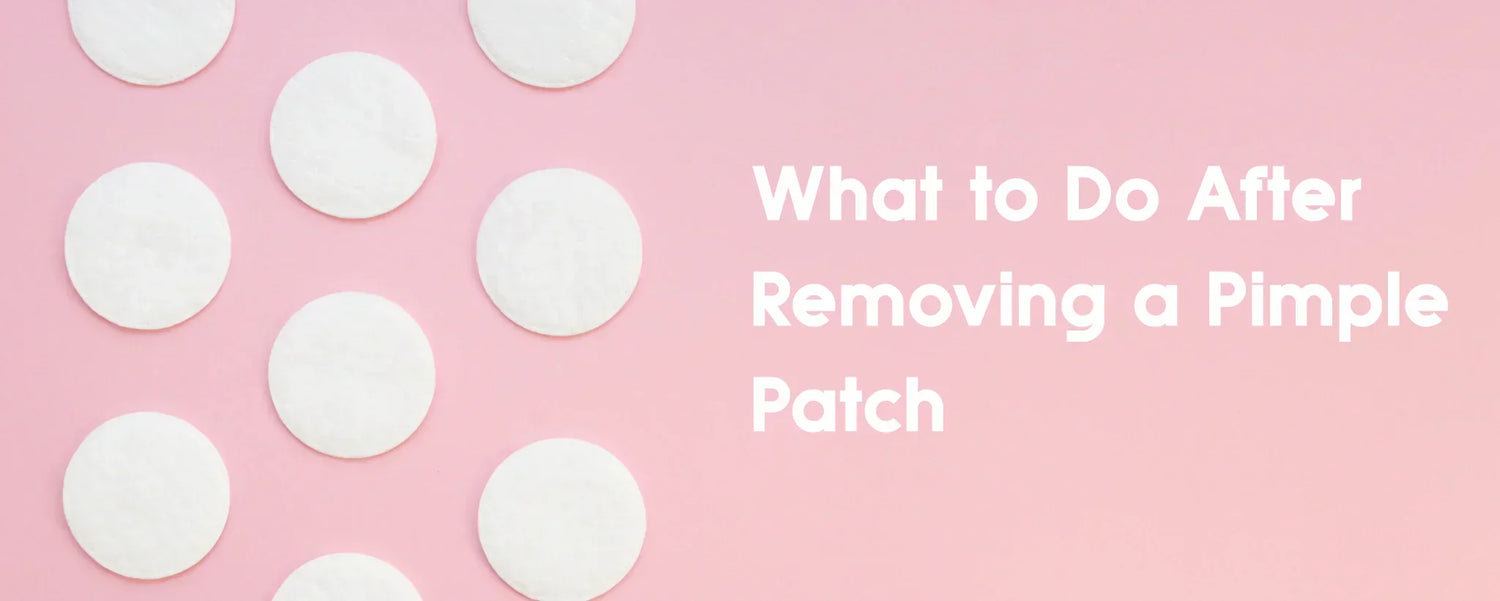You've done most of the work — applied the pimple patch and waited for it to do its magic. Now you're probably asking yourself: "What to do when you take off the pimple patch?"
What to Do After Removing the Pimple Patch?
Once you remove your patch, your skin is in a delicate, healing mode. The goal is to clean gently, support the barrier, and avoid irritating what’s already inflamed.
Gently cleanse your skin
Apply a light non-foaming cleanser or light-gel/cream cleanser that won’t have sulfates, lightly scented, and grit-free.
Wash your skin with warm water, apply the cleanser using clean fingers, and only rub around (not over) the treated skin.
Well-rinse and blot dry with a clean soft towel — no rubbing.
This helps remove any residual adhesive or "stickiness" from patch peeling off. Because your blemish is now inflamed, you don't need to do anything else to further irritate it.
Apply a Soothing Toner
Choose an alcohol-free, moisturizing toner (look for ingredients like glycerin, aloe, panthenol, or calming botanicals).
Apply the toner with fingers or a cotton pad lightly over the affected area to rebalance the skin's pH and to leave on a light soothing coat.
This therapy decreases any minor stinging or redness that occurs due to the adhesive and makes way for subsequent steps of hydration.
Hydrate and Moisturize
Your skin needs moisture — even when it’s healing.
-
Use a light, non-comedogenic moisturizer that won’t clog pores.
-
Apply a thin layer over treated area and surrounding skin.
Here are two Elire products you can add to your routine:
-
The Elire Firming Eye Cream is a soothing, firming eye cream for sensitive under-eye skin — it has peptides, ceramides and sodium silicate for firming and smoothing.
-
The Elire Dark Spot Corrector is formulated to fade dark spots, hyperpigmentation and acne scars — it has glycerin, ascorbic acid, aloe and kojic acid.
For post-pimple patch maintenance, you can employ the Dark Spot Corrector later on (after the skin heals and is no longer inflamed) to remove marks.
 Don't over-layer actives right after removing patches though — begin with the fundamentals (wash, tone, moisturize) and allow your skin to cease being reactive before introducing spot-correcting serums.
Don't over-layer actives right after removing patches though — begin with the fundamentals (wash, tone, moisturize) and allow your skin to cease being reactive before introducing spot-correcting serums.
Protect the Skin
In the morning apply broad-spectrum sunscreen (at least SPF 30) to the area. Even healing or healed skin can become pigmented from UV (post-inflammatory hyperpigmentation).
Do not touch, pick or press on the treated area during the day or at night. Let the skin heal undisturbed.
If the area is constrictive you can apply a gentle occlusive (such as petrolatum-free balm) around (not on) the zone to help the barrier, as long as it doesn’t irritate your skin.
Monitor Your Skin's Reaction
Your skin gives signals — listen.
-
Watch the treated area for excessive redness, swelling, burning, or worsening irritation.
-
If you notice signs of an allergic or adverse reaction (itching, blistering, spreading redness), stop using any new products and consider consulting a dermatologist.
-
Once the area is stable, you can resume your normal skincare routine, gradually reintroducing active ingredients like vitamin C, retinoids, or spot treatments.
Best Acne Pimple Patches
When you’re choosing quality patches, Elire offers some strong contenders:
-
Elire Daytime Pimple Patch — a discreet, ultra-thin hydrocolloid patch designed to absorb “gunk” in about 6–8 hours while blending with your skin during daytime wear.
-
Elire Nightime Pimple Patch — a medical-grade patch meant for overnight healing, drawing impurities while you sleep.
-
Elire Nose Pimple Patch — targeted for use on the nose area (for blackheads or clogged pores), using the same absorption principles.
Why do they stand out
Listed below are three reasons why you should use Elire products:
-
Medical-grade hydrocolloid: They’re formulated to absorb fluid effectively without being too aggressive.
-
Gentle design: They are suitable for all skin types and aim to minimize irritation and picking.
-
Practical time frame: The daytime patch acts within 6–8 hours, and the nighttime patch is built to stay put through the night.
They form a well-rounded set — daytime, nighttime, and nose-specific applications — giving you flexibility depending on the location and timing of your breakouts.
How to Use Pimple Patches Correctly?
To get the most from your patches, follow this step-by-step:
-
Cleanse and dry your skin. Ensure no excess oil, dirt, or residue remains.
-
Apply patch directly on the blemish, pressing edges so it adheres well.
-
Leave it on for the recommended time (usually 6–8 hours or overnight).
-
Remove gently, especially if the patch has turned opaque.
-
Then follow your post-patch care routine (the steps we covered above).
If you remove it before the patch changes or if fluid is still present, you might consider applying a fresh patch.
What Happens If You Leave a Pimple Patch on Too Long?
If you leave the patch beyond its effective timeframe, a few things may happen:
-
Over-softening (maceration): The skin under the patch can become overly moist or “wrinkled,” weakening the barrier.
-
Adhesive irritation: Wearing adhesive too long can lead to irritation or sensitivity.
-
Diminished performance: Once the patch is saturated, it can’t absorb more fluid — leaving it longer won’t help more.
That’s why sticking to the recommended wear time (6–8 hours or overnight, if designed for that) is important.
Dos and Don'ts When Using Pimple Patches?
Here’s a quick cheatsheet of what you should do and what you shouldn’t while using a pimple patch.
The dos:
-
Apply to clean, dry skin
-
Leave on for the recommended time
-
Be patient — let it work
-
Replace if saturated before time is up
The don’ts:
-
Use on open wounds or broken skin
-
Pick at skin underneath
-
Reuse patches
-
Apply heavy makeup over a patch (unless it’s made for daytime stealth)
Can You Use Pimple Patches Every Day?
Yes — as long as there are new blemishes to treat. Pimple patches work great for spot treatment. That said, don’t apply them to completely clear skin in a preventive manner. Use them when necessary, when you see a whitehead, raised bump, or active pore.
How Often Should You Use Pimple Patches?
Always use pimple patches as needed:
-
Some people use them nightly during breakout periods
-
Others use them only when a red or raised spot appears
If a patch doesn’t change (i.e. doesn’t turn opaque), that suggests the blemish may not yet have fluid to draw out; you might skip patching that one at the moment.
How Long Should You Wear Pimple Patches?
Most patches are designed for 6–8 hours or overnight use. That window gives enough time for hydrocolloid absorption to occur while minimizing risks of over-wear.
You can wear patches during the day (especially slim or discrete ones), but overnight is often when the most absorption and healing occurs.
When to stop using a pimple patch?
You can discontinue using a patch when:
-
The blemish has flattened and stopped producing fluid
-
The patch no longer changes (i.e. doesn’t turn opaque)
-
The area shows signs of healing (less swelling, redness reduced)
-
You experience irritation or sensitivity at the site
Once it’s stable, move to more normal skincare or use spot treatments if needed.
Frequently Asked Questions About Pimple Patches
Why do dermatologists not like pimple patches?
There are a few myths, but pimple patches are generally a favorite among dermatologists — particularly for picking the right types of blemishes (such as whiteheads or red bumps). The trouble starts when patches are being used in the wrong ways (such as for more severe cystic acne) or people are using them as a substitute for a complete acne treatment regimen.
Are you supposed to wash your face after a pimple patch?
Yes — after the patch removal, gentle cleansing is recommended to eliminate residual adhesive and prepare the skin for soothing and moisturizing treatments.
What to do with a hole after a pimple patch?
Occasionally when you remove a patch, you will notice that there is a small indentation or "pit" (due to fluid uptake). That is typically temporary. Moisturize the area, keep it covered with SPF on the day, and don't fiddle with it. It should even out eventually. If it does not level out or gets deeper, see a dermatologist.
Do pimple patches draw out pus?
Yes — as we've suggested, their hydrocolloid effect draws fluid (oil and pus too) out of the spot and into the patch, which is why it will sometimes turn opaque as it functions.
Conclusion
Caring for your skin after a pimple patch has been taken off is every bit as crucial as the patch itself – it's that final piece of the puzzle.
By being gentle with a good cleanse, slapping on a soothing toner, locking in moisture, protecting that skin with some SPF and keeping an eye out for any signs of irritation, you're giving your skin the best possible chance to heal up nice and smooth.
And when it comes to picking the right patches for the job, Elire’s range of products - think Daytime, Nightime, and Nose Pimple Patches – is there to make life easy. Their patches are designed to mop up all the nasty stuff, protect the spot and to be brutally honest with you – reduce the temptation to mess with it.









